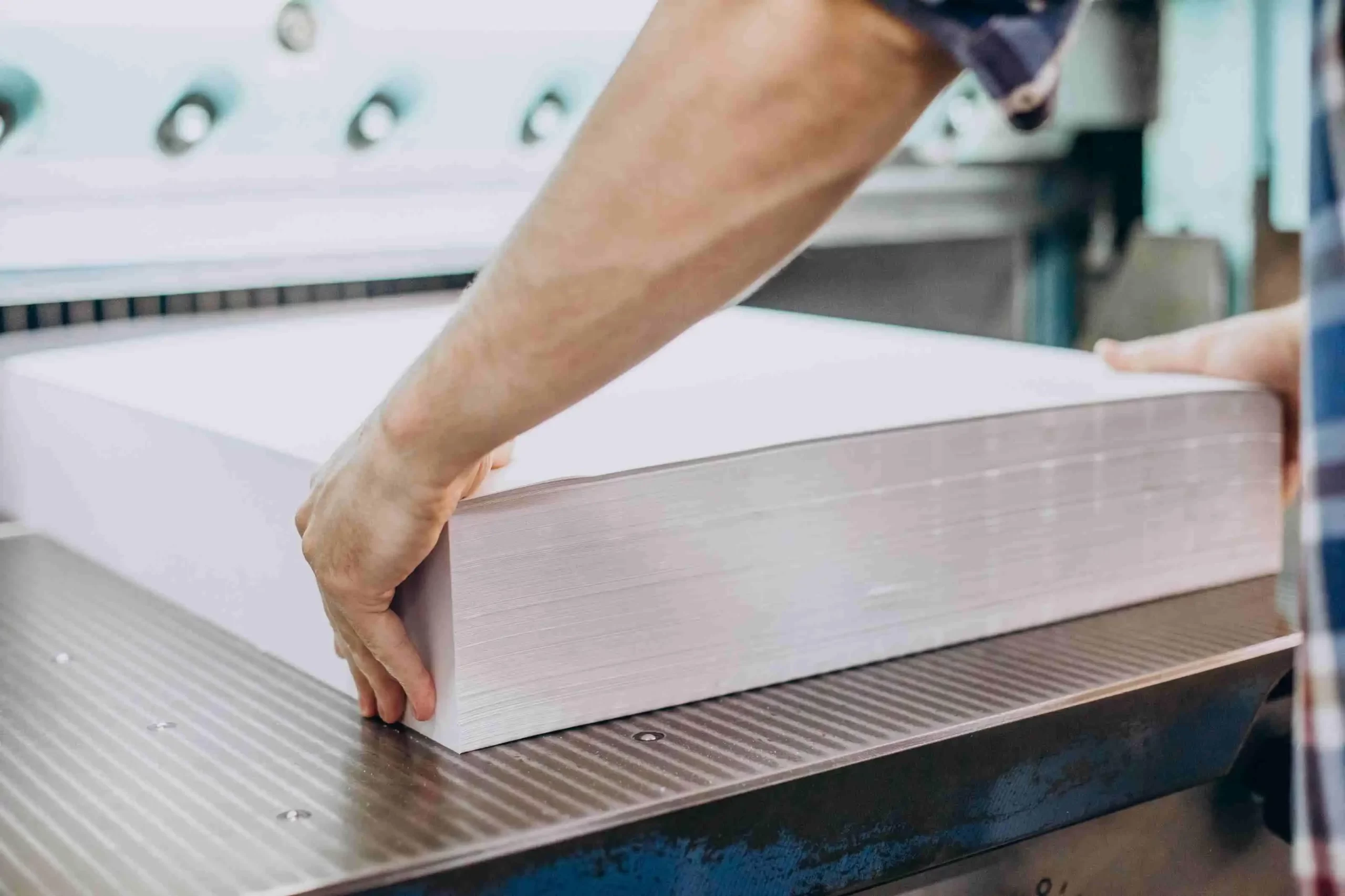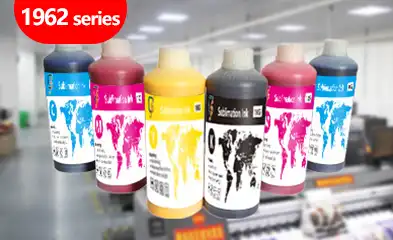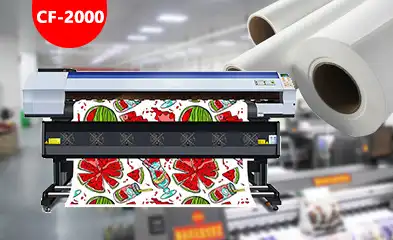HOT SALE
APPLICATION
Phone:+86-15215969856 E-Mail: 396838165@qq.com
Launching a print business can be thrilling and a great way to make money, especially if you pick the best tools and supplies right from the start. One of the easiest and cheapest ways to begin is by using inkjet heat transfer paper. This method lets business owners make personalized items like T-shirts, bags, and cups without spending a lot on fancy screen printing machines or big workspaces. For new businesses wanting to jump into digital printing without breaking the bank, inkjet sublimation transfer paper is a perfect starting point.

What Is Heat Transfer Paper and How It Functions
Heat transfer paper is a unique material with a special coating that helps move printed pictures onto cloth or other surfaces using heat and force.
The Science Behind Heat Transfer Printing
The main idea of heat transfer printing comes from how heat works. First, the picture is printed backward on the coated part of the paper with the right kind of ink. Then, when heat and pressure are added, often with a heat press machine, the ink turns into gas (for sublimation) or softens (for pigment or inkjet transfer). After that, it sticks to the fibers of the material it’s being pressed onto.
Key Components of Heat Transfer Paper
This kind of paper usually has three parts: a base sheet to hold everything, a release layer, and a layer that grabs the ink. The ink-holding layer keeps the ink in place while printing. Meanwhile, the release layer makes sure only the design moves to the surface during pressing. Good-quality papers soak up ink well and let go of the design cleanly for clear, sharp results.
Differences Between Inkjet and Laser Transfer Papers
Both types do a similar job, but they’re made for different kinds of printers. Inkjet transfer papers work with water-based inks, either dye or pigment. On the other hand, laser papers are built to handle the hot temperatures of laser printers. Inkjet sublimation transfer paper is especially great for polyester fabrics and coated items because it creates bright, lasting images.
Advantages of Using Inkjet Sublimation Transfer Paper for Startups
Lots of new businesses pick inkjet sublimation because it’s cheap, flexible, and easy to get started with.
Cost-Effectiveness Compared to Other Printing Methods
When you compare it to old-school screen printing or direct-to-garment (DTG) options, inkjet heat transfer doesn’t cost much to begin. You just need a simple inkjet printer, matching inks, some heat transfer paper, and a small heat press. All of these can be bought without spending a fortune.
Flexibility in Design and Material Application
This way of printing lets you make single designs or small batches without extra setup fees. Whether you’re personalizing clothes or making promo stuff like cups or mousepads, inkjet sublimation works well on various materials, especially those made of polyester.
Low Equipment Investment Requirements
Unlike pricey DTG printers that can set you back thousands, many sublimation setups only need a budget-friendly inkjet printer switched to use sublimation inks. These inks are kind to the environment, safe to use, and give bright, lively colors. That makes them a top pick for new businesses wanting good results without spending too much.
Step-by-Step Overview of the Heat Transfer Process
Knowing each part of the process helps you get better outcomes and cuts down on waste while making things.
Preparing Digital Designs for Printing
Begin by designing your image with software like Adobe Illustrator or CorelDRAW. Don’t forget to flip the image before you print it. This ensures it looks right after it’s transferred.
Printing on the Transfer Paper with Inkjet Printers
Put your chosen heat transfer paper into the inkjet printer. Make sure to print on the coated side. Pick high-quality settings for the clearest picture. With good sublimation inks, you can print smoothly at 360dpi for 20 meters straight without issues like breaks or holes. This keeps your work steady and reliable.
Applying Heat and Pressure to Transfer the Image
Lay your printed design face-down on the item you’re decorating. Set your heat press machine to the right heat, usually between 180 and 200°C. Press for about 30 to 60 seconds, depending on what you’re using. Keep the pressure strong and even to get a smooth transfer.
Choosing the Right Materials for Optimal Results
Using the correct supplies makes a huge difference in how good and long-lasting your prints are.
Types of Fabrics Compatible with Heat Transfer Paper
Inkjet sublimation shines on light-colored polyester fabrics or hard items with a polymer coating, like ceramics or metal. If you’re working with cotton, you’ll need special treatments or a different kind of heat transfer paper that isn’t based on sublimation.
Our digital papers are perfect for kids’ clothes, trendy accessories, stylish outfits, and home fabrics.
Selecting the Appropriate Inkjet Printer and Inks
Go for printers with piezoelectric heads, like certain Epson models. They pair nicely with third-party sublimation inks. Used For: Epson I3200 nozzle (2~4nozzle). These inks give deep, bold prints that stay colorful after transferring.

Importance of Heat Press Machines in Quality Transfers
A solid heat press keeps the heat even all over. This is super important to get pro-level results without blurry spots or uneven transfers.
Common Challenges and How to Overcome Them
Even if everything is set up right, newbies might run into problems that mess with the final item’s quality.
Issues with Image Peeling or Cracking After Washing
Causes and Solutions for Poor Adhesion
Peeling often happens when there’s not enough pressure or if the paper and ink don’t match well. Make sure all your supplies are meant to work together with your printer.
Tips for Improving Wash Durability
Stick to top-notch inks that resist fading when washed. Textile materials after transferring: Sunproof Level 6; Washproof Level 4-5. This means they hold up really well, even after many washes, if used the right way.
Color Accuracy and Image Sharpness Problems
Managing Printer Settings
Tweak the color settings in your printer driver to match what the maker suggests. Always use high-quality print settings, like 300 to 600 dpi, for the best look.
Using High-Quality Sublimation Inks
Cheap inks can lead to dull colors or block your printer heads. Good inks with a wide color range and bright shades help you get pro results, even if you’re just starting out.
Maintenance Tips for Long-Term Efficiency
Taking good care of your tools helps them last longer and keeps your prints looking great over time.
Cleaning and Caring for Your Printer
Run cleaning cycles on your printer often to stop clogs, especially if you don’t use it every day. Keep unused ink cartridges sealed tight in a cool spot.
Storing Heat Transfer Paper Properly
Store your papers flat in their original box, away from dampness or sunlight. These can ruin the coating if left out too long.
Regular Calibration of Heat Press Equipment
Check the heat level every month with a thermometer strip or digital tool. Adjust it if needed to make sure the heat spreads evenly when pressing.
Scaling Your Print Business with Minimal Investment
Once you’ve got the hang of small-scale printing, it’s time to grow bigger!
Expanding Product Offerings (T-shirts, Mugs, Tote Bags)
Use your current setup to add new items that need similar materials or steps. Think about polyester pillowcases or drinkware made for sublimation.
Marketing Strategies on a Budget
Take advantage of free platforms like Instagram or TikTok. Post quick videos showing how you make your products. Fun content can spread fast without costing you a dime on ads.
Outsourcing vs. In-House Production Considerations
Outsourcing might seem easy, but it means less control over quality and timing. Instead, get tools like multi-station presses. They help keep things consistent as orders grow, without cutting into your profits.
Introducing Changfa Digital as Your Trusted Supplier
Finding dependable partners is key when getting supplies that your business depends on.
Changfa Digital is a skilled maker of sublimation paper, offering digital printing help for over 12 years. With modern coating lines and cutting workshops, they ship worldwide and are ready to be your long-term ally.
Overview of Changfa Digital’s Product Range
We make all kinds of sublimation papers in different weights (40gsm–100gsm) and sizes (61cm–320cm).
Sublimation Papers and Inks
Our items include quick-drying sublimation paper rolls for polyester fabric. These are awesome when you need to work fast during busy times.
Printers and Heat Transfer Machines
They provide full setups with matching printers and presses, designed just for new business workflows.

Tissue Paper for Sublimation Support
Extra items like tissue rolls stop blurry prints by soaking up extra wetness or gas during the heat process.
Why Choose Changfa Digital for Your Print Business Needs
With tons of know-how and worldwide shipping options, they’re a trusty choice whether you’re just kicking off or growing fast!
FAQs:
Q1: What types of fabrics work best with inkjet heat transfer paper?
A: Polyester fabrics are the top choice for inkjet sublimation transfer paper. They bond well with the dyes under heat. Cotton clothes need special coatings or other methods since they don’t mix well with regular sublimation.
Q2: Can I use a regular home printer with heat transfer paper?
A: Yes, but it has to be an inkjet printer that works with dye-sublimation inks, often Epson models. Don’t use thermal head printers. They don’t match with the third-party inks needed for this.
Q3: How long do transferred designs typically last after washing?
A: If done right with strong materials like Washproof Level 4-5 rated inks and papers, the designs can handle lots of washes without fading much or peeling. Just follow care tips, like washing in cold water inside out.







